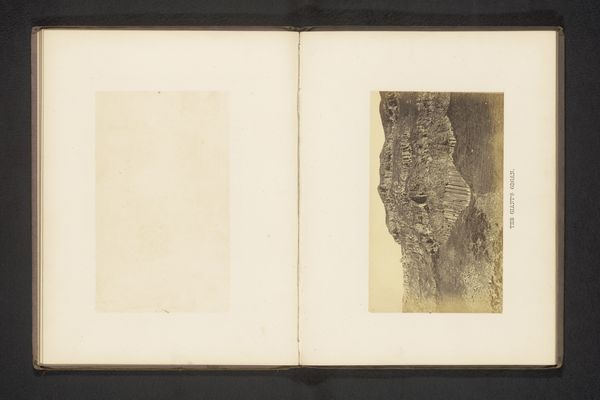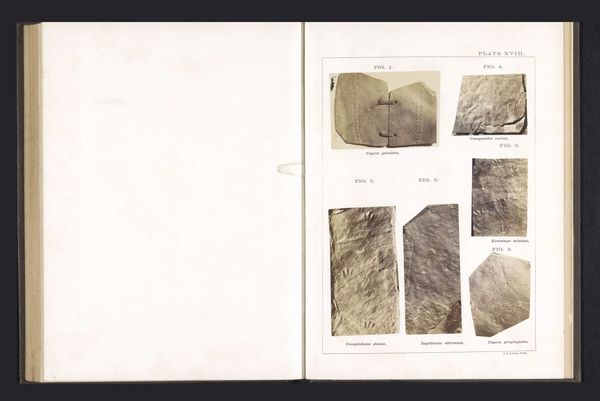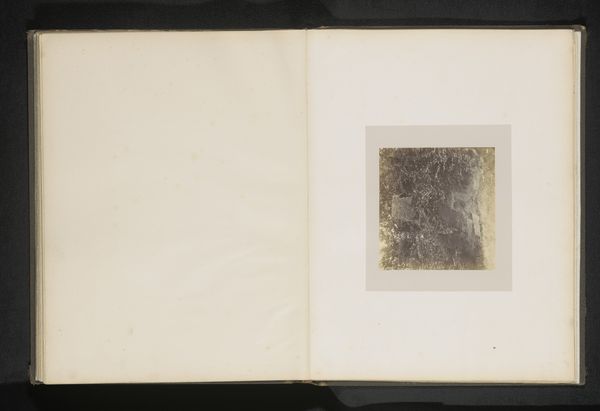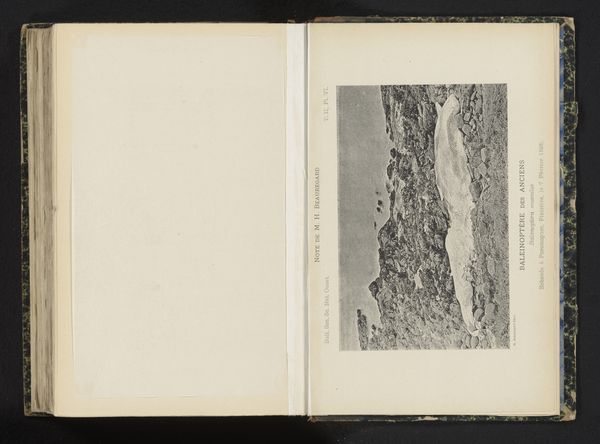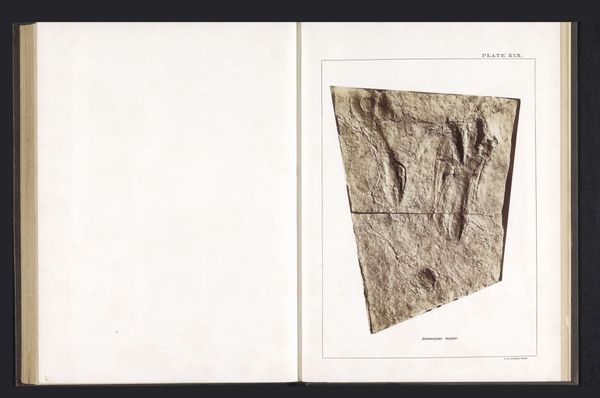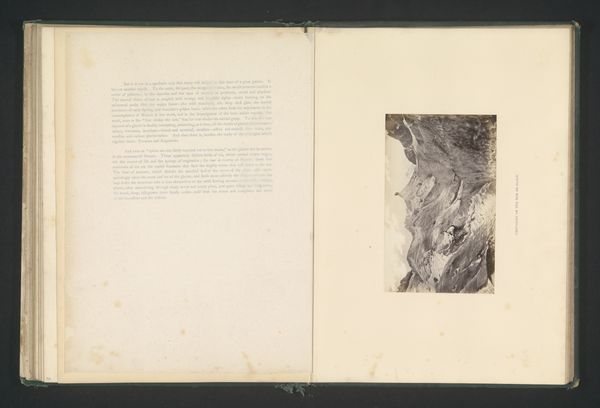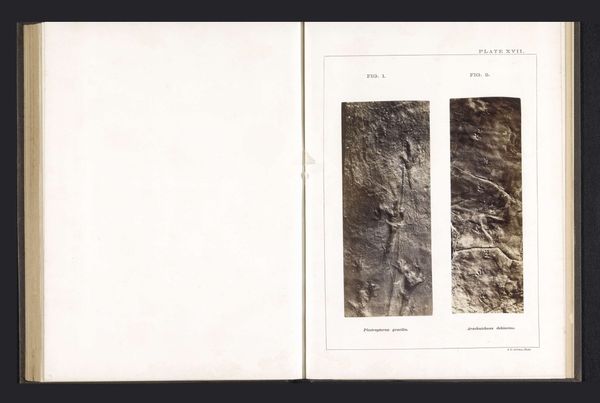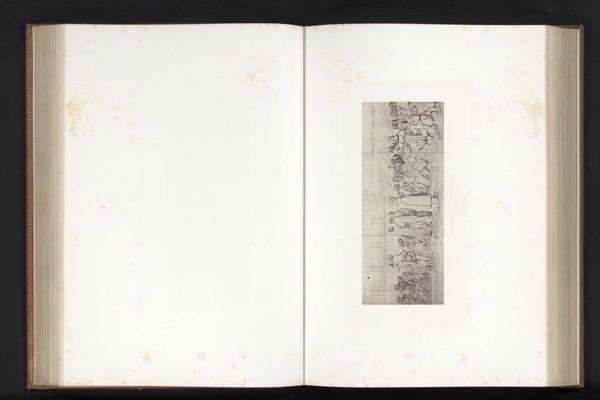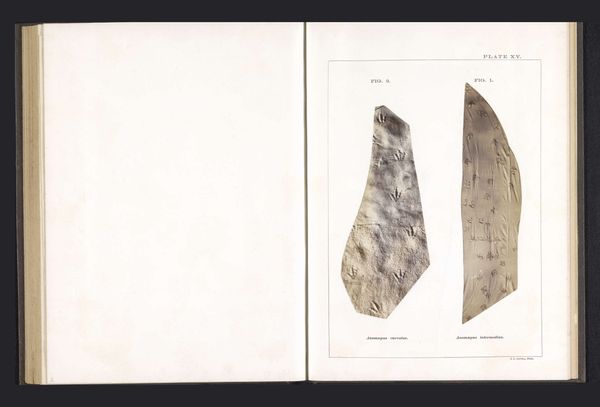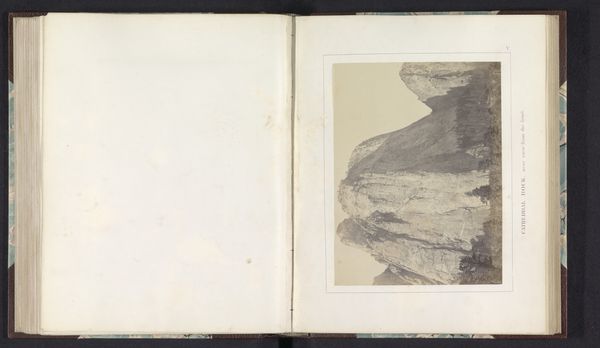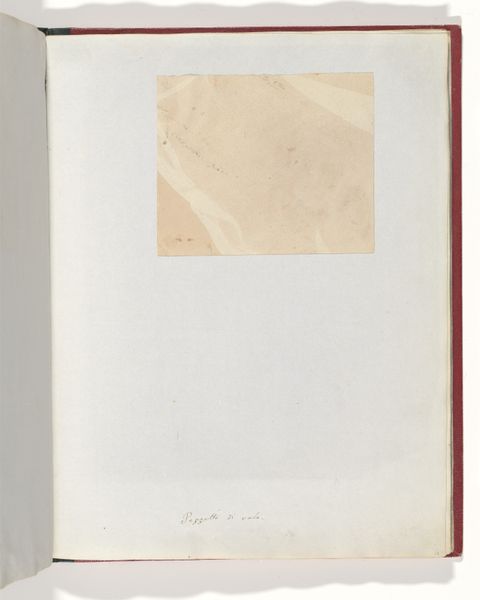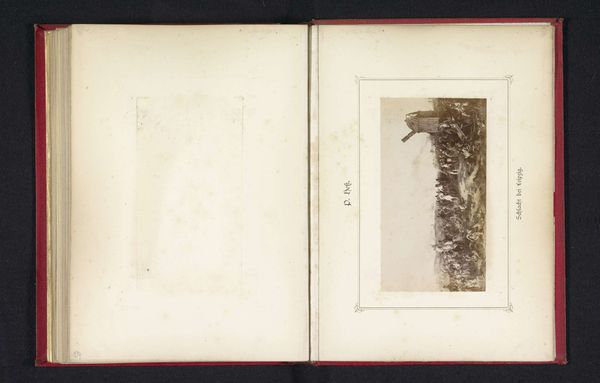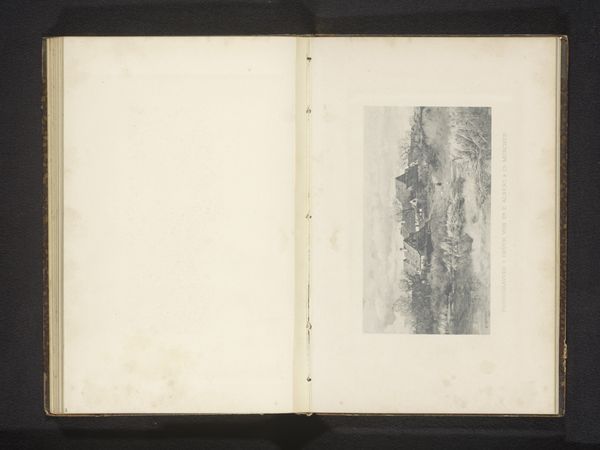
#
sand serif
#
aged paper
#
homemade paper
#
script typography
#
paperlike
#
hand drawn type
#
hand-drawn typeface
#
stylized text
#
thick font
#
handwritten font
Dimensions: height 184 mm, width 118 mm
Copyright: Rijks Museum: Open Domain
Editor: This is an image entitled "Climacodichnus corrugatus," created before 1863 by J.L. Lovell. It looks like a plate from a book. It seems to show the texture of a rock surface. How do you interpret this work? Curator: This image, appearing in a book, serves as an intriguing intersection of science, art, and the sociopolitical contexts of its time. I see it less as a straightforward geological record and more as a reflection of 19th-century approaches to understanding the natural world. The printing of natural specimens makes me think about colonialism and the role of science in the exploitation and classification of resources. What do you notice about the way the specimen is presented? Editor: It’s very clinical, presented almost like a scientific specimen. There is very little information besides the object’s name, and "Plate XIII". Curator: Exactly. But think about this presentation. This mode of scientific illustration—born out of specific historical power dynamics— impacted our ability to see these traces outside a specific framing as purely "scientific". The very act of naming and classifying serves as an assertion of control over the natural world, does it not? The lack of additional information beyond its classification places it within the context of broader institutional agendas, namely resource management and knowledge gathering during a time when there was significant disruption. How can art allow us to revisit this relationship today? Editor: That’s a really interesting point! I never thought about scientific illustrations having that sort of social or even political weight. Thinking about it that way, it gives this image a completely different dimension! Curator: Indeed. Seeing such works demands that we consider their complex origins. By adopting this kind of perspective, we enable a new appreciation for what these things tell us.
Comments
No comments
Be the first to comment and join the conversation on the ultimate creative platform.
